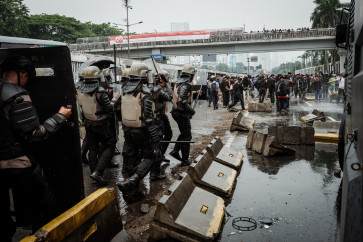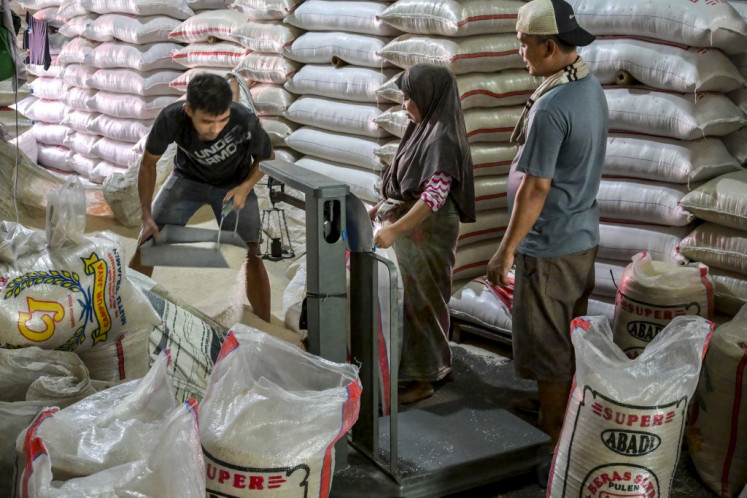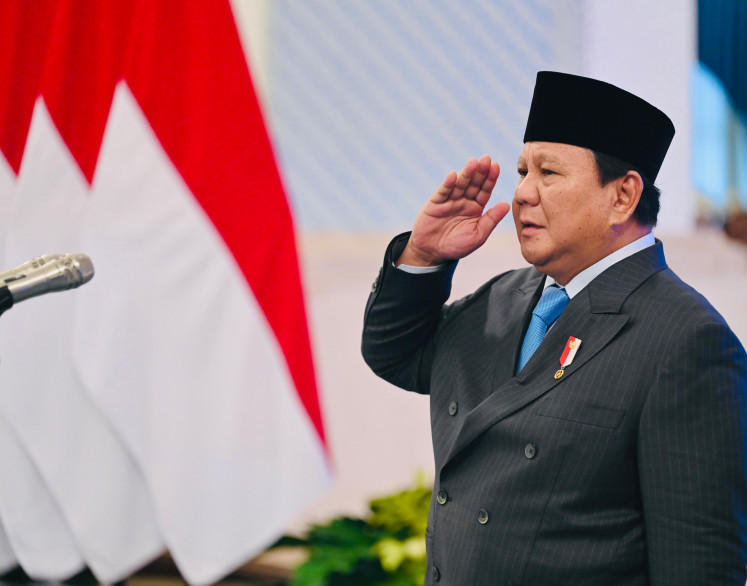Popular Reads
Top Results
Can't find what you're looking for?
View all search resultsPopular Reads
Top Results
Can't find what you're looking for?
View all search resultsAnalysis: Financial inclusion through government aid programs
Imagine an Indonesia where the poor have the ability to save money without risk of it being stolen
Change text size
Gift Premium Articles
to Anyone
Imagine an Indonesia where the poor have the ability to save money without risk of it being stolen. Imagine an Indonesia where the poor do not need to borrow from usurers just to meet their day-to-day expenses. Imagine that the poor could have access to basic financial services. Or could you imagine how it would be if you did not have access to financial services?
The fact is that more than one-third of the Indonesian population (according to a 2010 World Bank survey) does not have access to financial services. Most of the unbanked come from poor and vulnerable groups, groups of people who spend less than US$2 per day for living, who have minimal education and live in remote regions of Indonesia.
According to the National Economic and Social Survey (Susenas), 37 percent of the total Indonesian population, or about 92 million people, live below this line. The World Bank recorded that only 10 percent of the poor and vulnerable groups have accounts in formal financial institutions. This condition is mainly caused by most of the commercial banks, which target higher income individuals and large urban companies to be their prime customers.
The World Bank survey found that the poor and vulnerable groups need the type of security that can be obtained with a savings account in a bank. These groups think that they do not have sufficient income to deposit money in a bank. They think that it would be impolite to deposit only Rp 10,000 or Rp 20,000.
The distance to a branch also plays a vital role to shape their concepts about banks. The cost of transportation, bank administration costs and the complicated procedures of financial services discourage the poor from voluntarily seeking access to financial services.
The government does not stay silent when facing this situation. Bank Indonesia initiated a program called TabunganKu back in 2010. TabunganKu is a savings account customized for poor and vulnerable groups. With only Rp 20,000 required for a starting balance and without monthly administration costs like those charged by banks for other savings accounts, the government was optimistic that TabunganKu would be a solution for the unbanked.
Unfortunately, the one main weakness with a TabunganKu transaction is that it can only be done in a bank branch, which was a big problem for the unbanked because of the limited availability of bank branches. In 2012 the International Monetary Fund (IMF) recorded only 10 bank branches for every 100,000 adult Indonesian in the country, which is lower than other ASEAN countries such as Malaysia, which had 20 branches, and Thailand, which had 12.

Since installing an ATM is less costly than opening a bank branch, their numbers can also demonstrate the level of financial service dispersion. The number of ATMs per 100,000 adults in Indonesia is 37: lower than Thailand (at 84), Singapore (with 58), and Malaysia (53). The problem is made worse since most bank branches and ATMs are mainly located on either Java or Bali.
The solution for more widely dispersing financial services is to use a local person as a bank agent to operate what is usually called branchless banking. Banks empower selected local people as their service points in area with no branches. Mobile banking can be used as the platform and the agent will receive a commission based on the transaction. Unbanked people would mostly be pleased since they can directly access agents without encountering any obstacles, like when they try to use bank branches. The scheme may differ according to the specific conditions of an area.
The critical point for allowing banks to participate in branchless banking is the quality of their mobile banking services and support from their telecommunication providers. Bank Indonesia already released a regulation about the digital payment system used in this program and the Financial Service Authority (OJK) is finalizing a policy for branchless banking. Within a short period of time, commercial banks will be in race to develop their own branchless banking programs.
Agent banking will be a sound solution for the unbanked who have a certain level of income, but do not have access to savings accounts. But how about the group that does not have any income left to save? Are they destined to remain unbanked and excluded from financial services? The answer is no. There's a solution for the government.
This group usually receives government assistance, such as school funds or cash aid during price-hike periods. The government has some direct support programs for poor people (G-to-P), namely the Program Keluarga Harapan (PKH) and Bantuan Siswa Miskin (BSM) and a temporary program called Bantuan Langsung Sementara Masyarakat (BLSM).
These three programs involve cash transfers to targeted individuals. PKH is a conditional cash transfer from the Ministry of Social Affairs to 7 percent of the poorest families according to income distribution. BSM is an educational assistance program targeting students from poor families and BLSM is a temporary cash transfer to provide compensation to cover the adverse effects of some government policies, like a hike in the price of subsidized fuel.
The disbursement of these programs is mainly channeled through the post office. These programs have the potential to increase the financial inclusion rate in Indonesia. If the payment is appropriately channeled via a financial institution, the poor and vulnerable groups can be introduced to several basic financial products and services. Indonesia has 4,519 post offices ready to serve these programs, which is relatively low compared to the total number of bank branches across the country: about 19,000.
Please note that post offices are more evenly dispersed throughout Indonesia since bank branches tend to be concentrated in urban areas. Government can use both institutions for a wider and more comprehensive provision of service. At least 15 million families (according to figures gathered in 2013 for the implementation of BLSM) will be financially educated when payments are channeled through financial institutions. This number will greatly increase when agent banking is fully operational in remote areas. This is great news since financial inclusion is a prime focus of the new government for shaping a more inclusive Indonesia.
__________________
The writer is employed at the Mandiri Institute.










